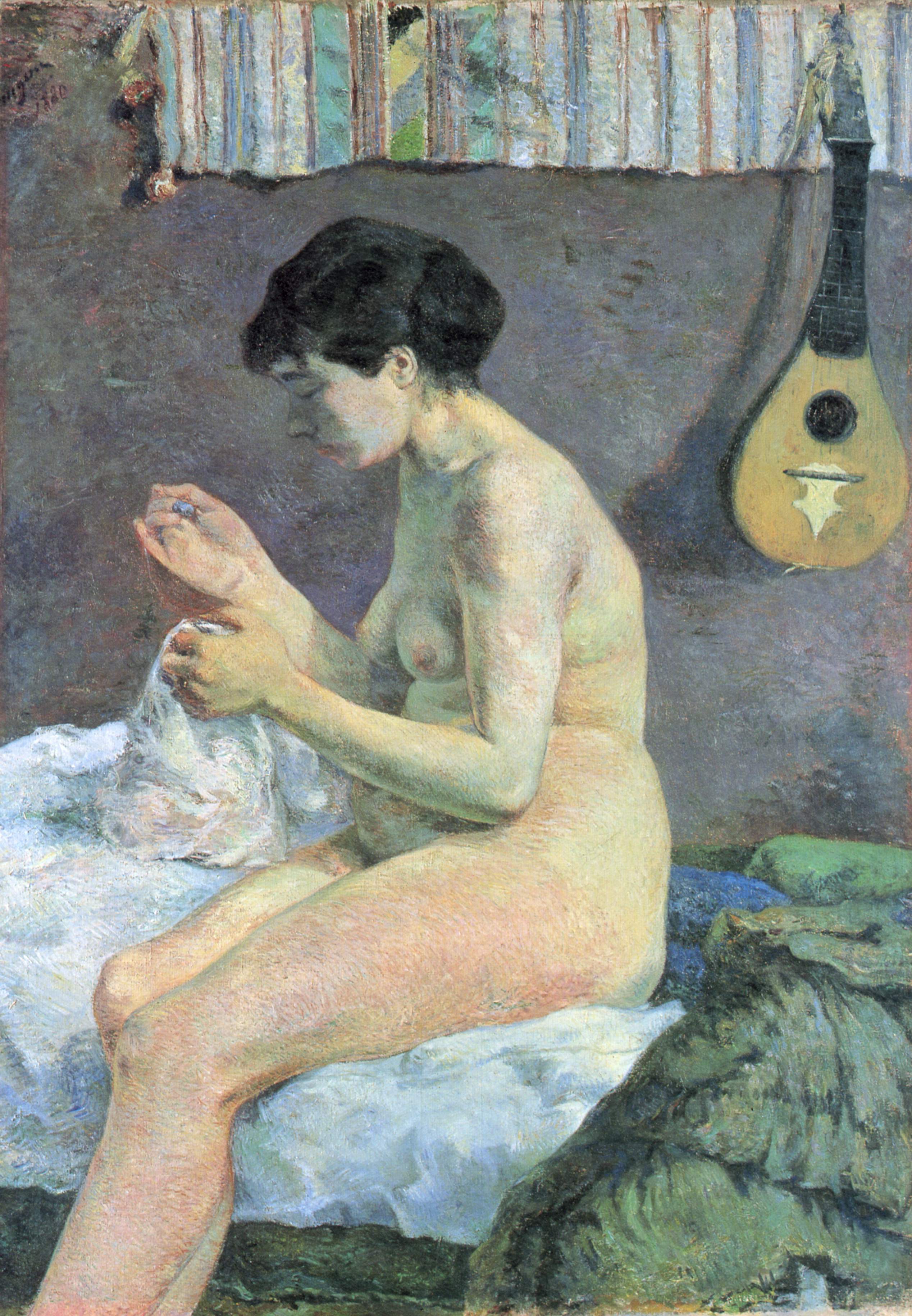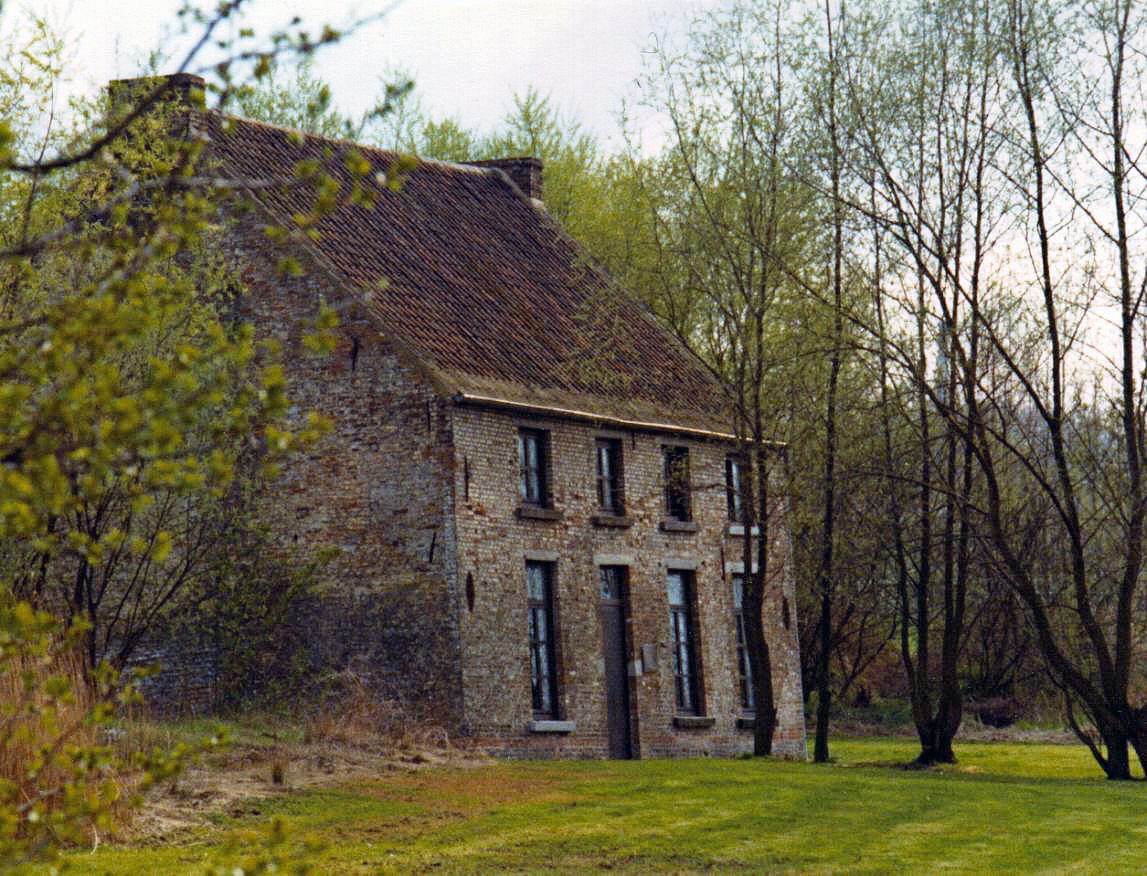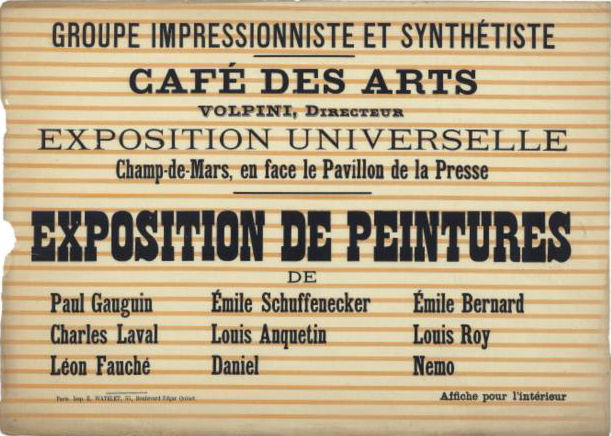|
Roy De Maistre
Roy De Maistre CBE (27 March 18941 March 1968) was an Australian artist of international fame. He is renowned in Australian art for his early experimentation with "colour-music", and is recognised as the first Australian artist to use pure abstraction. His later works were painted in a figurative style generally influenced by Cubism. His ''Stations of the Cross'' series hangs in Westminster Cathedral and works of his are hung in the Tate Gallery, London and in the Art Gallery of New South Wales, Sydney. Early life Roy went by the name of Leroy Leveson Laurent Joseph De Maistre, but had been born as Leroy Livingstone de Mestre at Bowral, New South Wales on 27 March 1894 into a home of high social standing in the then Colony of New South Wales. He was the youngest son of Etienne Livingstone de Mestre (1832–1916), the thoroughbred racehorse trainer of the first two Melbourne Cup winners; and the grandson of Prosper de Mestre (1789–1844) a prominent Sydney businessman from ... [...More Info...] [...Related Items...] OR: [Wikipedia] [Google] [Baidu] |
Bowral
Bowral () is the largest town in the Southern Highlands of New South Wales, Australia. It is south-west of Sydney and north-east of Canberra. It is the main business and entertainment precinct of the Wingecarribee Shire and the Southern Highlands. Bowral once served as a rural summer retreat for the gentry of Sydney, resulting in the establishment of a number of estates and manor houses in the district. Bowral is often associated with the cricketer Sir Donald Bradman. Bowral is close to several other historic towns, being from Mittagong, from both Moss Vale and Berrima. The suburb of East Bowral and the village of Burradoo are nearby. History Bowral's colonial history extends back for approximately 200 years. During the pre-colonial era, the land was home to an Aboriginal tribe known as Tharawal (or Dharawal). The first European arrival was ex-convict John Wilson, who was commissioned by Governor Hunter to explore south of the new colony of Sydney. Other people to ... [...More Info...] [...Related Items...] OR: [Wikipedia] [Google] [Baidu] |
Prosper De Mestre
Jean Charles Prosper de Mestre (15 August 1789– 14 September 1844), known as Prosper de Mestre, was a French-born prominent businessman in Sydney, Australia from 1818 until near his death in 1844. He was a "citizen of the world", (His citizenship was listed as French, American and Australian) who played an important role in the development of commerce and banking in the British Colony of New South Wales. He became a successful merchant and business leader in Sydney. In 1825 he became the second person to be naturalised in the colony. In addition to being one of the early directors of the Bank of New South Wales between 1826 and 1842, he was also a founder of the local insurance industry, a member of the committee of the Agricultural Society of New South Wales, and became involved in importing, shipping and whaling. There are numerous references to his business activities in the Colonial Secretary's papers of the day. Background De Mestre was also the father of Etienne Livingst ... [...More Info...] [...Related Items...] OR: [Wikipedia] [Google] [Baidu] |
Julian Ashton Art School
The Julian Ashton Art School was established by Julian Ashton in 1890 as the "Academy Julian", (perhaps a reference to the Académie Julian in Paris) has been an influential art school in Australia. For a long time it was known as the Sydney Art School. The Julian Ashton Art School (building), Julian Ashton Art School building, and some of its equipment, have been heritage listed, in part due to the significance of the school itself. History After Julian Ashton died in 1942, the school was run by Henry Gibbons (1884–1972). Henry Gibbons had started at the school as a student in April 1919 and soon became the teacher of the night drawing classes. In 1924 Gibbons proposed starting a Saturday afternoon class so that he could teach some of the night drawing students to paint. The Saturday class started in February 1924 and the first nine students were Dobell, Dundas, Passmore, Badham, Lawrence, Brackenreg, Byrne, Hubble and Cox. Gibbons taught many winners of the NSW Traveling Art ... [...More Info...] [...Related Items...] OR: [Wikipedia] [Google] [Baidu] |
Norman Carter
Norman St Clair Carter (30 June 1875 – 18 September 1963) was an Australian painter, known particularly for murals and stained-glass designs. History Carter was born in Kew, Melbourne and studied 1892–98 at the National Gallery School under Albert Tucker and Phillips Fox, and served an apprenticeship with a stained-glass maker. He moved to Sydney in 1903, and taught at the Royal Art Society of New South Wales, before joining Sydney Technical College in 1915 where he lectured until 1940. He was employed at Sydney University from 1922 to 1947, lecturing on architecture and history of art. Works * He designed the windows for the chapel at Wesley College, Melbourne Wesley College is a co-educational, open-entry private school in Melbourne, Australia. Established in 1866, the college is the only school in Victoria to offer the International Baccalaureate (IB) from early childhood to Year 12. The college .... * He designed the four-light stained glass window of the "Warri ... [...More Info...] [...Related Items...] OR: [Wikipedia] [Google] [Baidu] |
Paul Cézanne
Paul Cézanne ( , , ; ; ; 19 January 1839 – 22 October 1906) was a French Post-Impressionism, Post-Impressionist painter whose work introduced new modes of representation, influenced avant-garde artistic movements of the early 20th century and formed the bridge between late 19th-century Impressionism and early 20th-century Cubism. While his early works were influenced by Romanticism – such as the murals in the Bastide du Jas de Bouffan, Jas de Bouffan country house – and Realism (arts), Realism, Cézanne arrived at a new pictorial language through intense examination of Impressionist forms of expression. He altered conventional approaches to Perspective (graphical), perspective and broke established rules of Academic Art, academic art by emphasizing the underlying structure of objects in a composition and the formal qualities of art. Cézanne strived for a renewal of traditional design methods on the basis of the impressionistic colour space and colour modulation principl ... [...More Info...] [...Related Items...] OR: [Wikipedia] [Google] [Baidu] |
Paul Gauguin
Eugène Henri Paul Gauguin (; ; 7 June 1848 – 8 May 1903) was a French painter, sculptor, printmaker, ceramist, and writer, whose work has been primarily associated with the Post-Impressionist and Symbolist movements. He was also an influential practitioner of wood engraving and woodcuts as art forms. While only moderately successful during his life, Gauguin has since been recognized for his experimental use of color and Synthetist style that were distinct from Impressionism. Gauguin was born in Paris in 1848, amidst the tumult of Europe's revolutionary year. In 1850, Gauguin's family settled in Peru, where he experienced a privileged childhood that left a lasting impression on him. Later, financial struggles led them back to France, where Gauguin received formal education. Initially working as a stockbroker, Gauguin started painting in his spare time, his interest in art kindled by visits to galleries and exhibitions. The financial crisis of 1882 significantly impact ... [...More Info...] [...Related Items...] OR: [Wikipedia] [Google] [Baidu] |
Vincent Van Gogh
Vincent Willem van Gogh (; 30 March 185329 July 1890) was a Dutch Post-Impressionist painter who is among the most famous and influential figures in the history of Western art. In just over a decade, he created approximately 2,100 artworks, including around 860 oil paintings, most of them in the last two years of his life. His oeuvre includes Trees and Undergrowth (Van Gogh series), landscapes, Still life paintings by Vincent van Gogh (Paris), still lifes, Portraits by Vincent van Gogh, portraits, and Portraits of Vincent van Gogh, self-portraits, most of which are characterised by bold colours and dramatic Paintwork, brushwork that contributed to the rise of expressionism in modern art. Van Gogh's work was only beginning to gain critical attention before he died from a self-inflicted gunshot at age 37. During his lifetime, only one of Van Gogh's paintings, ''The Red Vineyard'', was sold. Born into an upper-middle-class family, Van Gogh drew as a child and was serious, qui ... [...More Info...] [...Related Items...] OR: [Wikipedia] [Google] [Baidu] |
Roland Wakelin
Roland Wakelin (17 April 1887 – 28 May 1971) was a New Zealand-born Australian painter and teacher. Early life Roland Shakespeare Wakelin was born on 17 April 1887 in Greytown, New Zealand, Greytown, New Zealand. He studied at Wellington Technical School from 1902 to 1903. Shortly after, while working in the Land and Income Tax Department, he took night classes in painting under Henri Bastings. In 1908 and 1909, he visited his brother in Sydney then in 1912 joined him, then enrolled in the Royal Art Society School to study drawing and painting under Dattilo Rubbo alongside fellow students Grace Cossington Smith, Norah Simpson and Roy De Maistre, Roy de Maistre. Career In 1913, he started working at the New South Wales Land Tax Office. In 1914, he started working as a ticket writer for Foy & Gibson, Mark Foy's and David Jones Limited, David Jones department stores, then from 1916 worked for the commercial art firm of Sydney Ure Smith, Smith and Julius. In this position, Wak ... [...More Info...] [...Related Items...] OR: [Wikipedia] [Google] [Baidu] |
Grace Cossington Smith
Grace Cossington Smith (20 April 189220 December 1984) was an Visual arts of Australia, Australian artist and pioneer of Modernist art, modernist painting in Australia and was instrumental in introducing Post-Impressionism to her home country. Examples of her work are held by every major gallery in Australia. Biography She was born Grace Smith, in Neutral Bay, Sydney, second of five children of London-born solicitor Ernest Smith and his wife Grace, née Fisher, who was the daughter of the rector of Cossington, Leicestershire, Cossington in Leicestershire. The family moved to Thornleigh, New South Wales around 1890. Grace attended Abbotsleigh School for Girls in Wahroonga 1905–09 where Albert Collins (painter), Albert Collins and Alfred Coffey took art classes. From 1910 to 1911 she studied drawing with Antonio Dattilo Rubbo. From 1912 to 1914 she and her sister lived in England, staying with an aunt at Winchester where she attended drawing classes as well as classes at Sz ... [...More Info...] [...Related Items...] OR: [Wikipedia] [Google] [Baidu] |
Norah Simpson
Norah Simpson (5 July 1895 – 19 February 1974) was an Australian modernist painter. She grew up in Sydney and is described as "giving impetus to modernism" in Australia: when returning from France in 1913, she brought back a series of reproductions of then-current works which were influential to her fellow art students. Sydney-based modernists inspired by those works and Simpson's descriptions of techniques include Grace Cossington Smith, Roy de Maistre and Roland Wakelin. Biography Norah Simpson was born on 5 July 1895 and grew up in Sydney. In 1911 Simpson was a student of Antonio Dattilo Rubbo, an Italian-born artist who taught in Australia from 1897, fellow students were Tempe Manning and Grace Cossington Smith. Late in 1911 Simpson travelled to London, and lived in Chelsea. Next year she enrolled in the Westminster School of Art and was taught by Walter Sickert, then she travelled to France to see the work of Cézanne, van Gogh, Matisse and Picasso. In 1913 she brou ... [...More Info...] [...Related Items...] OR: [Wikipedia] [Google] [Baidu] |
Post-Impressionism
Post-Impressionism (also spelled Postimpressionism) was a predominantly French art movement that developed roughly between 1886 and 1905, from the last Impressionist exhibition to the birth of Fauvism. Post-Impressionism emerged as a reaction against Impressionists' concern for the naturalistic depiction of light and colour. Its broad emphasis on abstract qualities or symbolic content means Post-Impressionism encompasses Les Nabis, Neo-Impressionism, Symbolism, Cloisonnism, the Pont-Aven School, and Synthetism, along with some later Impressionists' work. The movement's principal artists were Paul Cézanne (known as the father of Post-Impressionism), Paul Gauguin, Vincent van Gogh and Georges Seurat. The term Post-Impressionism was first used by art critic Roger Fry in 1906.Peter Morrin, Judith Zilczer, William C. Agee, ''The Advent of Modernism. Post-Impressionism and North American Art, 1900-1918'', High Museum of Art, 1986 Critic Frank Rutter in a review of the Salon ... [...More Info...] [...Related Items...] OR: [Wikipedia] [Google] [Baidu] |
Antonio Dattilo-Rubbo
Antonio Salvatore Dattilo Rubbo (Napoli 21 June 1870 – Sydney 1 June 1955) was an Italian-born artist and art teacher active in Australia from 1897. Rubbo, or Dattilo-Rubbo, was born in Naples in 1870, and spent his early childhood in the Neapolitan municipality of Frattamaggiore. He studied painting under Domenico Morelli and Filippo Palizzi before emigrating to Australia, arriving in Sydney in 1897. From 1898 Rubbo taught in Sydney schools including St. Joseph's College, Hunters Hill, Kambala School, The Scots College, Newington College and Homebush Grammar School. Dattilo Rubbo was not a great artist – "muddy genre portraits of very wrinkled old Tuscan peasants were his strong suit," according to critic Robert Hughes – but he was an inspiring art teacher, responsible for introducing a whole generation of Australian painters to modernism through his art school (opened in 1898) and his classes at the Royal Art Society of New South Wales. In contrast to nearly all oth ... [...More Info...] [...Related Items...] OR: [Wikipedia] [Google] [Baidu] |







